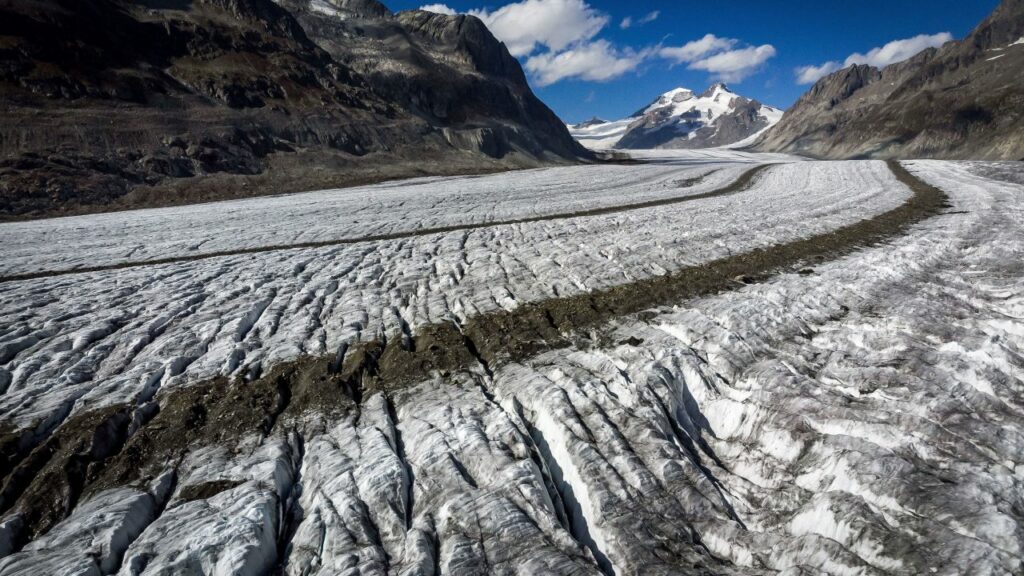You have to pity Ötzi the Iceman unearthed under receding glaciers back in 1991. True, he’s looking fairly good for a man his age, just north of 5,000. But in addition to not always getting the umlaut on his “O”, and experiencing a rough death, it now seems he’s had a pretty rough resting place as well. A new article in Sage Journals says “it is likely that Ötzi was not permanently buried in ice immediately after his death, but that the gully where he lay was repeatedly exposed over the next 1500 years.” Gad. What? Glaciers advancing and retreating and advancing again in natural cycles? Someone’s going to try to do that one in.
It’s interesting that in contrast to climate science, which is “settled” though constantly changing, most science is forever poking at established views and seeing if they need fixing or even discarding. And indeed in this case authors Lars Pilø, Thomas Reitmaier, Andrea Fischer, James H. Barrett and Atle Jesje (must there always be so many? Is there safety in numbers?) declare that since being discovered in 1991 Ötzi has attracted such scholarly interest that “The mummy and the associated remains are possibly the best-studied and most extensively published archaeological find assemblage ever.” Despite which they proceed to upend the existing findings, or try to, by saying “The damaged artefacts found with Ötzi were probably broken by typical postdepositional processes on glacial archaeological sites, and not, as previously claimed, during conflict prior to Ötzi’s flight from the valley below.”
Fairly dramatic. And on they go, saying the initial argument by “Spindler” in 1993 was that “Ötzi had fled from the valley below” clutching his busted-up or unfinished stuff then “froze to death” in the gully where he was found. Moreover, he was quickly engulfed by ice that was not subsequently disturbed until 1991. “How else could the body and artefacts be so well preserved?” Except maybe they weren’t.
After a long and frankly rather dry summary of previous research and speculation, including bickering about whether Ötzi died somewhere else and was smoked then laid to rest on a stone platform, which given the options was the best he could hope for, they say he probably fell into a snow-filled gully and that repeated melting and refreezing explains how the artefacts ended up not just in the place but also in the dilapidated condition in which they were found. And yes, they believe in the “so called Little Ice Age (LIA) which lasted from roughly 1250 CE to 1870 CE”.
It’s hard to tell whether they are employing extremely cautious language or write this way normally. But they end up being very coy about the implications of an area that just melted in 1991 having melted previously rather than representing an “unprecedented” event. They even refer to a “mid-Holocene glacier minimum” but then claim “The latter might be quite similar to today’s conditions where ice at the summits is a transient feature and will melt in a few years”. Which we find odd since it describes what might happen as something that will happen based on they know not what.
We beg to differ on several grounds. Including that the Holocene Climatic Optimum was a lot warmer than today even if you’re research grant would wind up scattered some distance from the remains of your academic career if you blurted it out now. As for their showing glaciers in retreat by 1870, well, draw your own conclusions about when warming from the LIA started and how little of it we caused.
The bottom line is what counts here. And it is that:
“The radiocarbon dates clearly show that material was repeatedly added to the assemblage in the gully, also after Ötzi’s death. The simplest way to explain this is that the find spot was also repeatedly exposed, which is in line with archaeological evidence from other mountain pass sites.”
The authors claim that the pattern primarily occurred in the 1500 years after his death, meaning between the “Holocene Thermal Maximum” as they call it and the cooling that caused the “Late Bronze Age collapse”, despite what people now say about warmth being bad, during which the Sea Peoples sacked Troy and made life miserable (or ended it) in Egypt. But either way, science suggests that between 3000 B.C. and 1991, his semi-final resting place was repeatedly frozen and repeatedly exposed. So there’s nothing weird, or unnatural, about it being exposed again in 1991. And no suggestion that previous thaws had anything to do with CO2.
P.S. Wikipedia now rubbishes the Roman Warm Period that followed that nasty cold, saying “recent research, including a 2019 analysis based on a much larger dataset of climate proxies, has found that the putative period, along with other warmer or colder pre-industrial periods such as the ‘Little Ice Age’ and ‘Medieval Warm Period,’ were regional phenomena, not globally-coherent episodes.” But murder will out, from that of Ötzi to that of data. And so will climate fluctuation.


